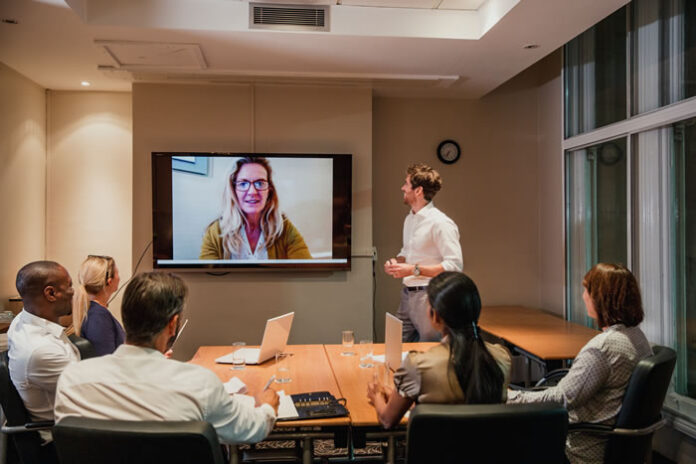The global coronavirus pandemic has ushered in rapid change. Across nearly every industry, office work has become remote work. Also, the rhythm and substance of our daily lives have been altered for the foreseeable future. As a result, cybersecurity has become an issue. Collaboration solutions like video conferencing are being victimized by their own success.
There’s no better example than Zoom, which went from 10 million to 200 million daily users in a matter of days. This spike happened as people worldwide were forced to quarantine at home. Zoom earned goodwill and media coverage by offering its services for free. They offered it not only to businesses struggling with the lockdown but also to schools and churches.
Prank calling?
But that goodwill was soon undone due to privacy and security concerns. It culminated in the “Zoom bombing” phenomenon, where pranksters joined Zoom calls. Their “pranks” ranged from disruption and trolling to fraud. Some even broadcast pornography and shock videos.
How did this happen? Each Zoom conference provides a randomly generated ID number that’s used by participants to gain access to a meeting. It was discovered that these IDs were easy to guess, enabling anyone to get into meetings. Zoom improved its security posture, but damage has been done to the company’s reputation, and issues with user confidence remain.
And Zoom bombing is just one of many conferencing security issues. As people are increasingly relying on video conferencing, they get frustrated with broken connections. They are looking for ways around that. An AI process developed by Nvidia replaces streaming video with a virtual “puppet.” This involves just one key image of the speaker, in addition to face-tracking data. Unfortunately, Nvidia’s solution opens up even more opportunities for misuse. It brings the threat of deep fakes even closer.
Video solutions like distance learning and even legal applications are seeing the need for enhanced security. Innovative approaches must be implemented. These ensure that the people we see online are, in fact, who they say they are.
Our Solution Is ‘iProoving’
So, can businesses be certain that employees are speaking to genuine colleagues? Are they sure they are not being hoodwinked into divulging sensitive information? Or taking instructions to make payments to criminals? How can families be sure that they are not suddenly going to be seeing porn during a family game night? Really knowing that a video conference user is a genuinely present person is crucial. It goes beyond verifying an ID or validating a password.
That’s where solutions like ours come in. iProov is the world leader in providing biometric facial verification technology. This assures the identity and genuine presence of individuals. Using Genuine Presence Assurance, video conferencing providers can ensure that a user is the right person. This means matching a trusted identity document if needed. It also ensures a real person, not a photo or video, and taking part right now, not a deep fake. Our firm began just a few years ago in the UK. We’ve been enthusiastically received by banks and governments worldwide. These organizations now rely on iProov’s patented identity verification technology. They achieve secure digital authentication to ensure that users are genuine.
iProov’s unique approach, called Flashmark, uses a sequence of colors. These illuminate an individual’s face while streaming back to iProov’s servers.
Based on how the light reflects and interacts with each unique face, iProov can determine the nature of the object. It figures out if it is observing a live, skin-covered, three-dimensional human face-shaped object or not. What’s more, the sequence of colors is different each time. This creates a multicolored, encrypted timestamp. It helps determine if Flashmark is observing a recording or a pre-made fake video.
A Closer Look
The benefits of using Genuine Presence Assurance in video conferencing are myriad. Consider that most schools are now relying on video conferencing to teach. What’s to prevent students from merely posting a picture or video of themselves? They could pretend to listen to a class. Or get help from others during exams. In addition, one can easily envision proctored tests being administered using Flashmark facial verification. Tests like the SAT, LSAT, or various state bar exams are unlikely to be in large auditoriums as before.
Another key use case for facial verification technology is the legal profession. The need for greater flexibility is being driven by the coronavirus. Traditional business practices like depositions and conferences have been disrupted. This is due to the inability to meet in person. For example, lawyers must accomplish live document signings that include witnesses. Video conferencing represents a viable alternative, but there must be a way to ensure that people seen online actually are who they say they are. In this application, law firms can benefit from iProov’s genuine presence assurance. It ensures security.
iProov is meeting the growing market need for authentic identity verification head-on. We’re expanding rapidly and aggressively moving into new markets. Our new geographies include North America. I’m honored to be leading our new U.S.-based team, strategically located in Catonsville, Maryland. This location helps us better serve our nearby Federal government customers as we continue to expand our North American footprint.
For videoconferencing and more, Genuine Presence Assurance is critical to seamless online experiences. iProov is excited about helping to deliver online trust. We ensure a more secure digital future.











